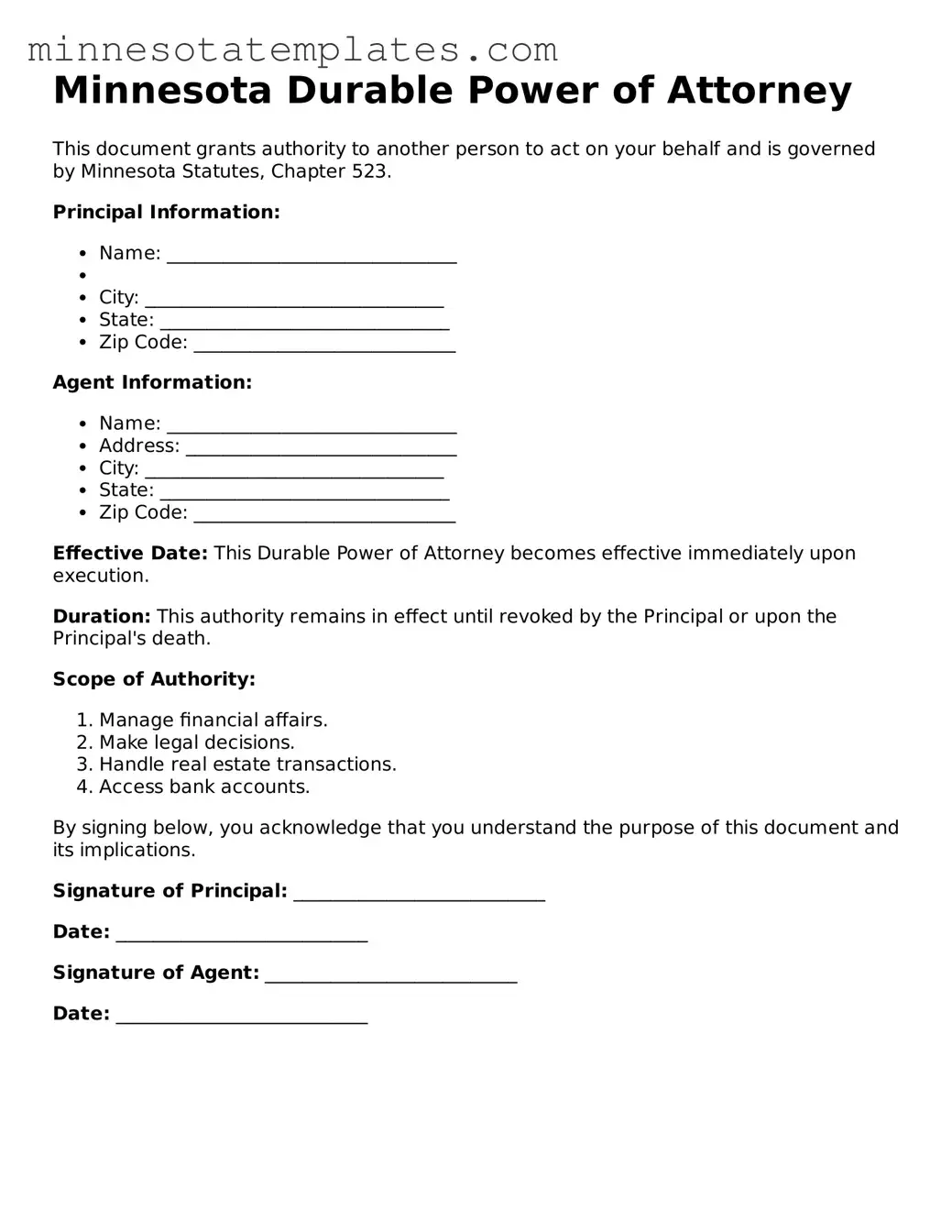In the realm of estate planning, the Minnesota Durable Power of Attorney form serves as a vital tool for individuals seeking to ensure their financial and healthcare decisions are managed according to their wishes, even if they become incapacitated. This legal document grants authority to a trusted person, known as the agent, to make decisions on behalf of the principal—the individual who creates the document. It covers a wide range of financial matters, including managing bank accounts, paying bills, and handling real estate transactions. Additionally, it can also encompass healthcare decisions, allowing the agent to make medical choices when the principal is unable to communicate their preferences. One of the key features of this form is its durability; it remains effective even if the principal becomes mentally incapacitated, providing peace of mind during uncertain times. Understanding the nuances of this document is essential, as it not only facilitates seamless management of affairs but also helps in avoiding potential conflicts among family members. By establishing a Durable Power of Attorney, individuals can maintain control over their lives, ensuring that their values and preferences are respected, regardless of the circumstances they may face in the future.
